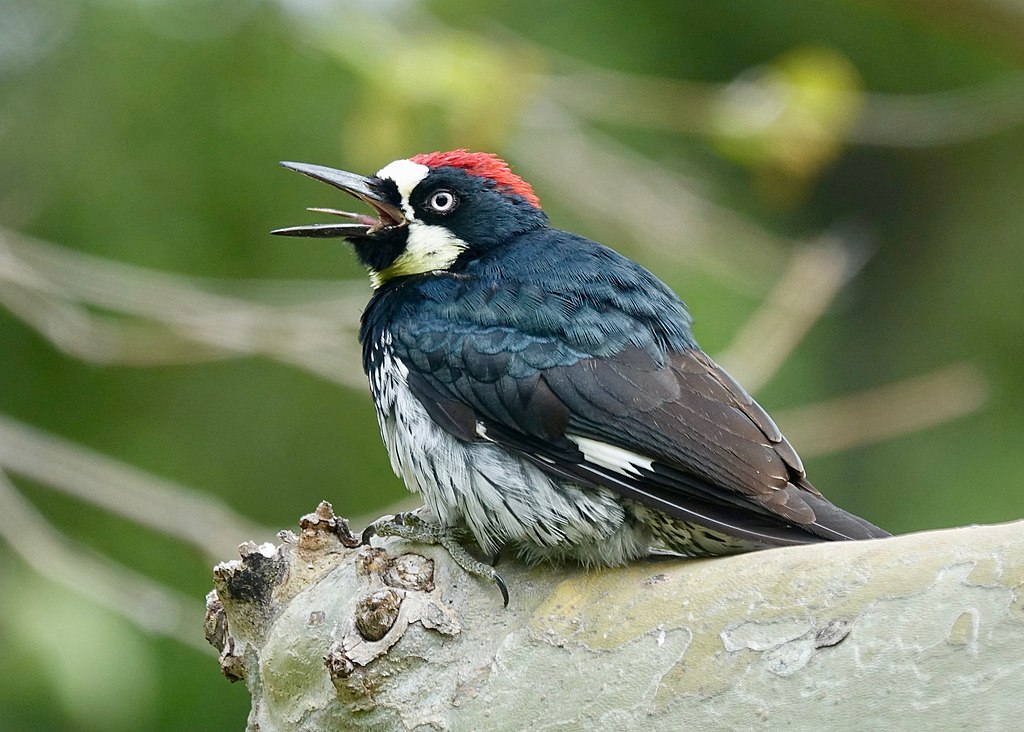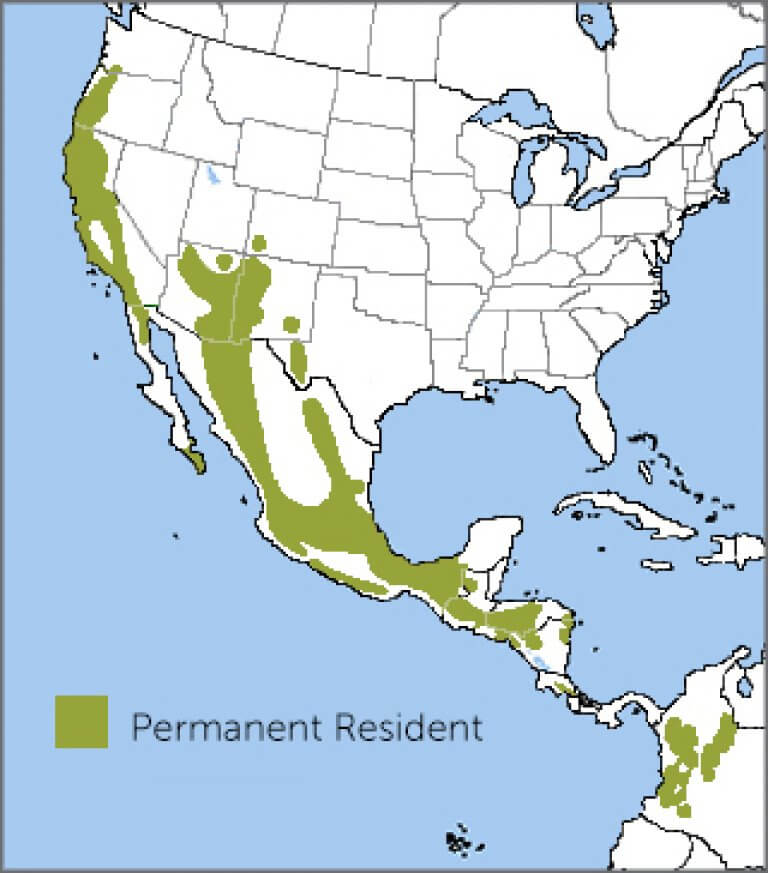
Most foraging, however, is performed in or near the canopy. When foraging, the woodpecker often sits at the tops of trees while flycatching. The bird prefers, however, flying ants and other Hymenoptera and Coleoptera. Occassionally, it eats grass seeds, lizards and bird eggs. The main diet of the Acorn Woodpecker consists of insects, sap, oak catkins, fruit, and flower nectar. The species is generally sedentary, but there are some migrant populations in areas where there are large seasonal fluctuations of insects. The woodpecker is extremely territorial of granaries and sap trees. Group members in temperate habitats do not forage together, but tropical populations often move together. The species is highly social and usually lives year-round in social units. Status: wild 114 months Bird Banding Laboratory

The average clutch size for a singleton female is four eggs. Average clutch size for a group with more than one female is five white, elliptical eggs. The inside of the nest cavity is lined with fresh wood chips, and nest holes may be used repeatedly for several seasons. Nest cavities are drilled into large dead or living limbs in trees or snags, which may contain granaries. Courtship and pair-bonding displays are absent. Reproduction competition between males is displayed by attempts by a male to disrupt copulation between another pair. After females have established a normal laying sequence, egg destruction stops. There is often extreme reproductive competition between joint-nesting females, who regularly destroy eggs laid by their cobreeders. In groups that contain more than one female breeder, the female cobreeders lay their eggs in the same nest cavity. Generally, Acorn Woodpecker groups contain 1-7 male breeders that compete for matings with 1-3 egg-laying females. Mating systems of Acorn Woodpeckers range from monogamy in some populations to cooperative polygyny. Average basal metabolic rate 0.737 W AnAge.

The wing span of the woodpecker ranges between 13-15 centimeters. In Colombian populations, the male has a solid red crown while the female has a black band separating the red crown from the white forehead. There is usually at least one red or yellow tipped feather on the throat. The Acorn Woodpecker is a medium-sized, black and white clown-faced bird with a red crown, glossy black and white head, white eyes, and white rump and wing patches.

Urban parks and suburban areas that possess numerous oak trees are often also home to the species. They are also found in riparian corridors, and in Douglas firs, redwood and tropical hardwood forests as long as oaks are available nearby. The Acorn Woodpecker prefers pine-oak woodlands where oak trees are plentiful. Once all the females start to lay, they stop removing eggs.The Acorn Woodpecker is found from northwestern Oregon, California, the American Southwest, and western Mexico through the Central American highlands and into the northern Andes of Colombia. A female usually destroys any eggs in the nest before she starts to lay, and more than one third of all eggs laid in joint nests are destroyed. In groups with more than one breeding female, the females put their eggs into a single nest cavity. If the stores are eaten, the woodpecker will move to another area, even going from Arizona to Mexico to spend the winter. In parts of its range the Acorn Woodpecker does not construct a granary tree, but instead stores acorns in natural holes and cracks in bark. Woodpeckers put 220 kg (485 lb) of acorns into a wooden water tank in Arizona. Occasionally the woodpecker will put acorns into places where it cannot get them out. The Acorn Woodpecker will use human-made structures to store acorns, drilling holes in fence posts, utility poles, buildings, and even automobile radiators. One granary tree may have up to 50,000 holes in it, each of which is filled with an acorn in autumn. Acorns typically are stored in holes drilled into a single tree, called a granary tree. Several different individuals of each sex may breed within one family, with up to seven breeding males and three breeding females in one group.Īll members of an Acorn Woodpecker group spend large amounts of time storing acorns. Family groups hold territories, and young woodpeckers stay with their parents for several years and help the parents raise more young.

The Acorn Woodpecker has a very complicated social system.


 0 kommentar(er)
0 kommentar(er)
